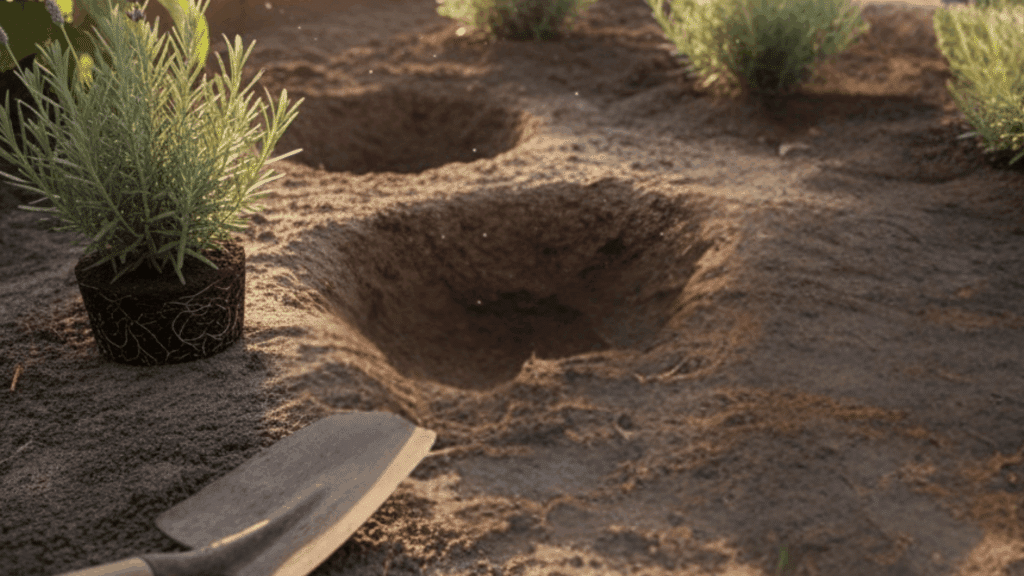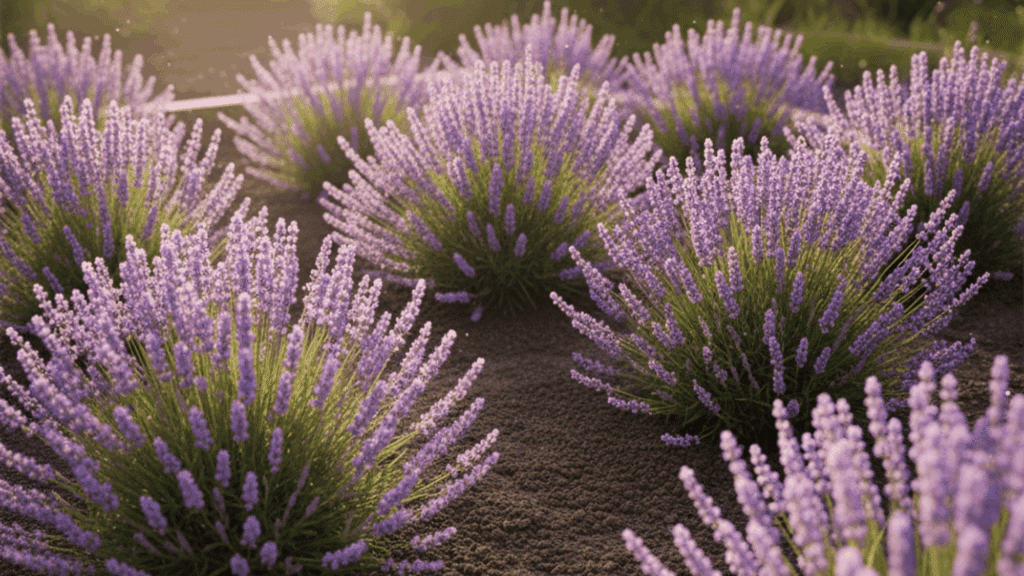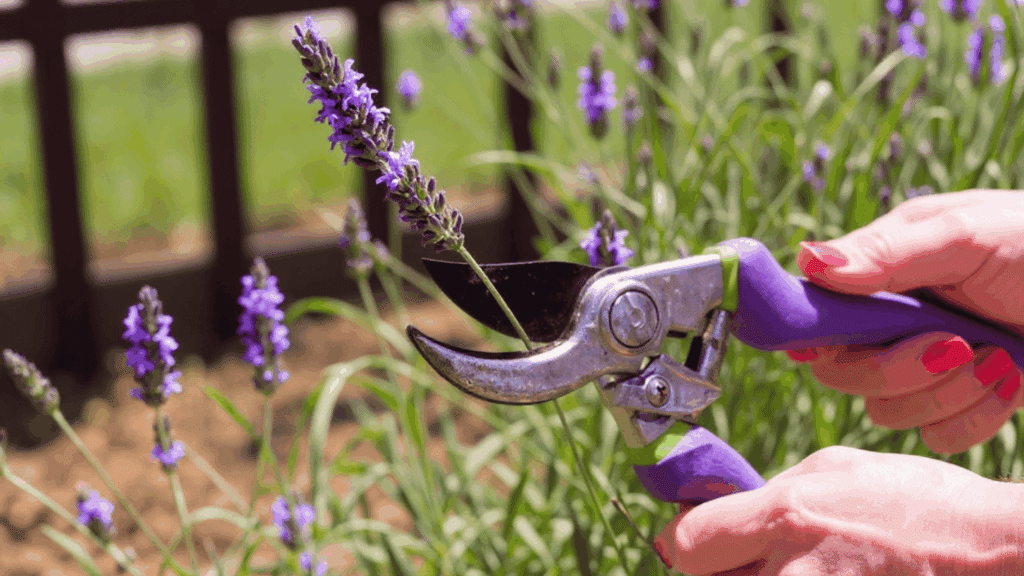Ever walked past a garden and stopped just to breathe in that sweet, relaxing lavender scent?
Lavender plants bring more than just beauty to a garden. They attract bees, repel pests, and even add flavor to cooking. But many people think growing them is tricky.
Lavender is surprisingly easy to grow when you know the right steps. With just a little care, anyone can enjoy these gorgeous plants year after year.
This guide breaks down exactly how to grow lavender in four simple steps. Let’s get started and turn that garden dream into reality.
About Lavender Plants and its Varieties
Lavender belongs to the mint family and comes in over 40 different species. Each variety has its own unique qualities, from flower color to hardiness levels.
- English lavender is the most popular type. It handles cold weather well and produces those classic purple blooms.
- French lavender offers a different look with its distinctive pineapple-shaped flowers.
- Spanish lavender thrives in hot climates and blooms earlier than other types.
Some varieties grow compact and tidy, perfect for containers. Others spread wide and work great as hedges.
The scent varies too; some smell sweeter, while others have a more camphor-like aroma. Choosing the right variety depends on climate and personal preference
When is the Best Time to Plant Lavender?

Spring is the ideal time to plant lavender in most areas. The soil warms up, and plants have months to establish strong roots before winter arrives.
Early spring works best, right after the last frost passes. This gives lavender the entire growing season to settle in. Fall planting can work too, but only in mild climates where winters stay gentle.
Avoid planting during summer heat or winter cold. Extreme temperatures stress young plants and reduce their survival chances.
Container-grown lavender from nurseries can go in the ground anytime during the growing season, though spring still offers the best results for healthy, thriving plants.
Basic Requirements You Need to Know Before Planting
Before putting lavender in the ground, understanding its basic needs makes all the difference. These plants have specific preferences that help them thrive and produce abundant blooms.
- Sunlight: Lavender needs at least 6-8 hours of direct sun daily. More sun means stronger growth and better flowering.
- Soil Type: Well-draining soil is essential. Sandy or gravelly soil works perfectly. Heavy clay soil leads to root rot.
- pH Level: Lavender prefers slightly alkaline soil with a pH between 6.5 and 7.5. Test the soil before planting.
- Water Needs: These plants are drought-tolerant once established. They hate wet feet and need infrequent, deep watering.
- Space: Give each plant 2-3 feet of space. Good air circulation prevents fungal diseases and keeps plants healthy.
- Climate: Most varieties handle USDA zones 5-9. Check which type suits the local climate best.
How to Grow Lavender Successfully
Growing lavender doesn’t have to be complicated. Following these four essential steps ensures healthy plants that bloom beautifully year after year.
Tools and Materials Required
| Tools | Materials |
|---|---|
| Garden spade or trowel | Lavender plants or seeds |
| Soil pH test kit | Sand or gravel |
| Watering can or hose | Compost (optional) |
| Garden gloves | Mulch or small stones |
| Measuring tape | Balanced fertilizer (optional) |
1. Choosing the Right Location and Soil Preparation

Find a spot with full sun exposure, at least 6-8 hours daily. Lavender loves bright light and warm conditions.
Check soil drainage by digging a hole and filling it with water. If it drains within an hour, it’s perfect. Heavy clay needs amending with sand, gravel, or compost.
Test pH levels and aim for 6.5-7.5. Consider raised beds in rainy areas to prevent waterlogging and root rot.
2. Planting Tips: Spacing, Depth, and Timing

Plant in spring after the last frost or early fall in mild climates. Dig holes twice as wide as the root ball but keep the crown slightly above ground level.
Space plants 18-24 inches apart for individual specimens, or 12-18 inches for hedges. Press soil gently around roots without compacting too much.
Lavender prefers loose, airy earth that allows roots to breathe and establish quickly during the first season.
3. How Much and When to Water Lavender

Water newly planted lavender every few days during the first season, especially in hot weather.
Once established, these plants become drought-tolerant and prefer drier conditions. Check soil moisture several inches down; only water when dry.
Overwatering causes root rot, the biggest killer of lavender. Never leave standing water around plants. Mature lavender handles dry spells better than excessive moisture, so err on the side of less water rather than more.
4. What Nutrients Lavender Needs and When

Lavender thrives in poor soil and doesn’t need much fertilizer. Rich soil produces weak, leggy growth with fewer flowers.
If desired, add a light application of slow-release balanced fertilizer or compost at planting time only. Don’t fertilize again during the growing season. High-nitrogen products create lush foliage but reduce blooms.
In very sandy soil, occasional aged compost helps, but avoid heavy organic mulches that retain too much moisture around stems.
Maintenance Tips for Healthy Growing Lavender Plants
Regular maintenance keeps lavender plants vigorous, beautiful, and blooming abundantly. These simple practices ensure long-term health and prevent common problems that affect growth.
- Prune annually in early spring, cutting back one-third of the plant to encourage bushier growth and more flowers.
- Deadhead spent blooms throughout the season to promote continuous flowering and keep plants looking tidy and well-maintained.
- Remove weeds regularly around the base to reduce competition for nutrients and improve air circulation around stems.
- Add a layer of gravel or small stones as mulch instead of organic materials to keep moisture away from the crown.
- Monitor for pests like aphids or spittlebugs, though lavender rarely has serious pest problems when grown in proper conditions.
Propagating Lavender: How to Grow More from Cuttings

Growing new lavender plants from cuttings is easy and saves money. Spring and early summer offer the best time for taking cuttings when plants produce fresh, soft growth.
Cut 3-4 inch stems from healthy plants, choosing non-flowering shoots. Strip leaves from the bottom half and dip the cut end in rooting hormone if available.
Plant cuttings in sandy, well-draining soil or a mix of sand and potting medium.
Keep the soil slightly moist and place containers in bright, indirect light. Roots develop in 3-4 weeks. Once established, transplant to individual pots or directly into the garden for continued growth.
Using Lavender Beyond the Garden
Lavender offers countless uses beyond beautiful garden displays. Harvesting and storing blooms properly preserves their fragrance and benefits for months of enjoyment year-round.
- Harvest flowers in the morning after the dew dries but before the heat of the day for the strongest fragrance and oil content.
- Hang bundles upside down in a dark, dry, well-ventilated space for 1-2 weeks until completely dried and crispy to the touch.
- Store dried lavender in airtight glass jars away from direct sunlight to preserve color, scent, and essential oils for up to a year.
- Use dried buds in sachets for drawers and closets to freshen linens and naturally repel moths and other insects from fabrics.
- Add lavender to homemade soaps, bath salts, teas, baked goods, or infuse it into oils for cooking and skincare applications.
Community Advice for Harvesting Your Best Batch of Lavenders
Experienced gardeners on Reddit share their hard-won wisdom about growing lavender successfully.
One user emphasizes the importance of choosing hardy varieties for cold, wet climates and stresses soil preparation above all else.
“If your soil is hard, brittle, and moist clay material, you need to mix a lots of sand,” they explain. The key is creating loose, fast-draining soil that prevents moisture buildup after rain.
Another gardener reports amazing results with a simple formula:
“We did a 1/3 sand to 2/3 potting soil mix and our lavender is VERY happy. I neglect the shit out of it and they’ve tripled in size.”
The consensus? Lavender thrives on neglect.
“Don’t feed, don’t water, don’t move,” one expert advises.
These Mediterranean natives prefer dry conditions with minimal intervention for the best growth.
Wrapping Up
Growing lavender successfully comes down to understanding what these plants truly need.
The biggest mistake gardeners make? Treating lavender like other garden plants. Too much water, rich soil, and constant attention actually harm these tough Mediterranean natives. They prefer neglect over pampering.
Start with proper soil preparation and the right variety for your climate. After that, step back and let nature do the work. Rain provides enough moisture in most areas, and fertilizer isn’t necessary.
With these four simple steps, anyone can grow beautiful, fragrant lavender that returns year after year.

